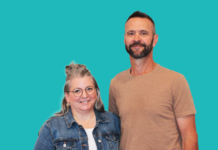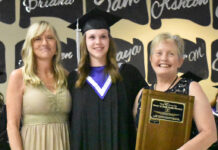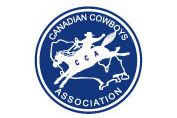The provincial government rolled out their return to school plan on August 4 with an aim to make the return to classes as normal as possible.
Minister of Education Gord Wyant unveiled their plan during a media event on Tuesday, with eight focus areas designed to keep staff and students safe. The specific details of each re-opening strategy was outlined in approved plans developed by Saskatchewan School Divisions.
“The fact of the matter is that the plans that have been submitted by school boards are intended to ensure that students return to school in as normal a situation as possible. We believe that’s important. Medical professionals and other professionals have indicated to us…that it’s important as a top priority that kids get back to school in as normal a situation as possible. Not just for socialization and for education, but for their mental health,” Wyant said while unveiling the provincial strategy.
“And so the idea behind the plans that have been submitted are precisely that. I think that at the end of the day there’s going to be a new normal in schools. Hopefully we get back to as normal a situation as possible and we don’t have to move past level one. But we want to ensure that students get the best educational opportunity that they can having regard to the situation. I think the plans that have been submitted by the school divisions meet that goal.”
Wyant noted the preparedness strategy has a four level alternative scenario which would be activated based on the advice of the Chief Medical Health Officer:
Level 1: Return to school as close to normal as possible, with additional safety measures and precautions. This is the scenario we are planning for for September 1.
Level 2: Should there be a need we are prepared to recommend mask usage for staff and students based on the direction of our Chief Medical Health Officer. These masks are being purchased centrally by the Ministry of Education and distributed to school divisions.
Level 3: In the event it becomes necessary, School Divisions will reduce capacity within schools, which may include cohorts and hybrid learning models as considerations.
Level 4: Implementing learning continuity plans, which means transitioning to mandatory remote learning.
“While every effort is being made within this plan to ensure transmission risk is minimized, that risk is not eliminated. Saskatchewan people have been able to return to a ‘new normal’ and resume their daily activities, and we now ask for their continued cooperation as we adjust to a new level of normal for schools. We’ve made every effort to make that adjustment as comfortable and as safe as possible for our students our parents and for our staff.”
Much of the focus during the August 4 unveiling came in regards to Saskatchewan’s decision not to implement mask usage during their return to school strategy. Saskatchewan’s plan was unveiled the same day that neighbouring Alberta unveiled their return to school plan which included mandatory masking for students in Grade 4 to 12 in common areas.
“We have chosen in our opening phase not to mandate masks in the opening stage. We believe that’s the best practice for Saskatchewan, at least at the beginning, leaving the door open of course for the Chief Medical Officer to recommend to us otherwise,” Wyant said.
The Minister of Education also pointed out that there is not a consistent national school re-opening strategy, and each province is moving forward with their own plans.
“There are differences with respect to plans in every jurisdiction in this country, and while there’s lots of similarities there are some differences, and Saskatchewan has chosen in this particular instance in phase one as we want to open up schools in as most normal a way as possible, that masks won’t be mandatory in our schools.”
Saskatchewan Chief Medical Health Officer Dr. Saqib Shahab noted a return to normal for students is important after schools were closed three and a half months early in the spring as a result of the pandemic, and with a two month summer vacation students will have been out of the classroom for five and a half months when the first day of classes resume in September.
“Many experts have said that you need to provide as normal and reassuring an environment as possible when school starts, especially for younger children. So the plan as outlined today and as designed June/July, takes into account that when you have low transmission, which was what we had in May/June, you can safely start school without the use of masks in every grade,” Dr. Shahab said on August 4.
“We have already also seen that daycares have been continuing throughout March onwards…and for the most part we have not had any outbreaks in daycares so there’s some reassurance there.”
“For younger children, especially pre-school and some of the reports from other parts of the world suggest children under age of 10, effective transmission doesn’t happen in settings such as daycare or even schools where school have started.”
He noted that sufficient precautions are in place to minimize transmission within a cohort of a single class with a teacher, and to minimize transmission between classes.
“But there’s also increasing evidence at a population level that mask use does have benefits in indoor environments. Again my recommendation use on mask use for everyone has been becoming stronger over the last two, two and a half months. Starting in September, I think as the weather cools and leads to more activities indoor, expectations should be that when you can’t reliably have physical distancing, or when you’re in a public place which means that you’re not interacting with the same people like in a work place, everyone should wear a mask.”
“How does that translate to the school setting? It may mean no changes to the current plan in settings where there’s low transmission and for more junior grades. But in settings where there’s increase in local transmission it may be mask use may be more relevant for more senior grades, and that certainly would include high school, and it would include senior grades in elementary schools, 6,7,8.
“I think we need to balance the benefits of mask use, especially in younger children, with some of the potential challenges that can present to provide a normal school environment. This pandemic is going to continue for the next weeks to months, and we need to be very careful in trying to, on the one hand provide as an environment with the precautions as laid out, but of course use masks as and when required.”
Both Wyant and Dr. Shahab did not totally dismiss a mask use recommendation, as the ministry has sourced six million masks in the event masking is required as an eventuality.
“Things could change before the beginning of September, and that’s one of the reasons that the government has sourced the masks in case the Chief Medical Health Officer decides that we need to move to Level Two or otherwise mandate masks in schools,” Wyant said.
“This changes on a daily basis, it can change on a weekly basis. So depending on the community transmission, depending on the risk of transmission in schools, depending on how things roll out over the next couple of weeks things could change and we could have a different level by September 1.”
“We look at the developments in all provinces in terms of how they’re moving forward not just with their return to school plans but their re-opening plans to make sure that we’re practicing best practices. Alberta and a number of other provinces have decided to mandate mask usage. We became aware of that this morning. Certainly that will be something that we will be talking about as we move forward in determining whether or not we will be moving from one level to another.”
“The discussions and the conversations that we’ve had in government with the Chief Medical Health Officer have been dependent of course on a large extent on the conversations that he’s been having with his colleagues around the country.
“We well move to mandatory masks. That will be a decision that gets made in consultation with the Chief Medical Health Officer. But there’s a number of other provinces that haven’t mandated masks and so to that extent we’ll continue to look to see how things roll out in those various provinces to make some determinations as to whether or not we have to amend our policy.”
Dr. Shahab again noted the plans submitted by each school division address the majority of the COVID spread concerns.
“There have been extensive discussion with the experts in education. So we have to recognize that the school divisions, teachers and school administrators are the experts of education, just like business owners are the experts of running a business. And so any plan we make has to be feasible in terms of supporting back to school programs that again supports the vast majority of students being in class.”
“So given that on one hand you want in class activities as much as possible, but there’s already lots of measures that for example no assemblies, some restriction on intramural sports and other activities that will minimize transmission between classes, and then specific guidance to minimize transmission within a class.”
“I think we will have to keep looking closely in terms of what are some areas that need further attention which may mean, especially if there’s increase in local transmission, mask use or may mean other recommendations especially for more senior grades.”
“We talk about flexibility in planning. Our transmission numbers were very low in May/June. They have picked up a bit. They’re maybe two to three times higher. They’re still not very alarming but they are higher, and we expected to see some of that happening as sectors reopen.”
“If there’s any signals of concern either in terms of community transmission or an issue within school settings, obviously there will be that flexibility to move to a higher level either at a specific school level or a specific level of geography as required.”






